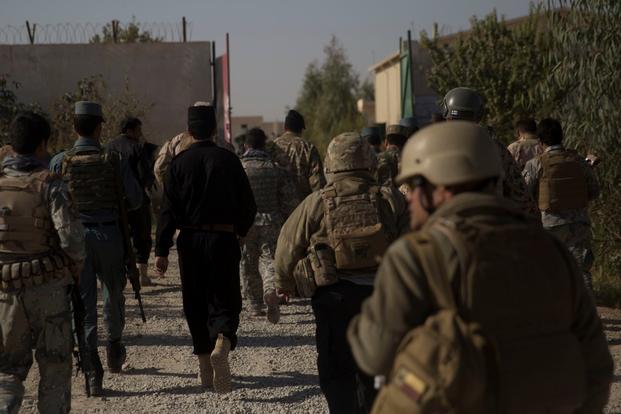The Pentagon's new "deploy-or-out" policy could result in the separation from military service of possibly 286,000 personnel who are currently deemed medically unfit for overseas duty.
"This new policy is a 12-month deploy or be removed policy," Robert Wilkie, the undersecretary of defense for Personnel and Readiness, told the Senate Armed Services Subcommittee on Personnel Wednesday.
Wilkie said there would be exceptions for pregnancies and the services would also be able to retain wounded troops who are cleared by medical boards.
"On any given day, about 13 to 14 percent of the force is medically unable to deploy -- that comes out to be around 286,000 service members," Wilkie said.
The new policy grew out of Defense Secretary Jim Mattis' directive last summer to the services to take steps to improve the "lethality" of the force in overseas operations. Mattis' guidance said the services' actions should be "designed to ensure our military is ready to fight today and in the future."
The solution the services came up with required service members to be deployable within 12 months or be forced out of the military.
In justifying the major policy initiative, Wilkie said that "The situation we face today is really unlike anything we have faced -- certainly in the post-World War II era. We have to ensure, given the climate this country faces, that everyone who signs up can be deployed anywhere in the world."
In a department-wide memo released Thursday on "Retention Policy for Non-Deployable Service Members," Wilkie said he would also be seeking to establish "standardized criteria for retaining non-deployable service members."
However, "service members who have been non-deployable for more than 12 consecutive months will be processed for administrative separation," the memo said. In addition, the services would not have to wait until a service member has been non-deployable for 12 consecutive months to begin the process of separation.
On exceptions, the memo said that the service secretaries will be "authorized to grant a waiver to retain in service a service member whose period of non-deployability exceeds the 12 consecutive months limit."
Wilkie gave the services until Oct. 1 to implement the new policy, but said they also could begin separating non-deployable personnel immediately at their discretion.
Army Lt. Gen. Thomas Seamands, who testified with Wilkie at the hearing Wednesday, said that the Army was committed to making "continued reductions to our non-deployable population a priority," but he also pointed to ongoing efforts to help troops regain the ability to deploy and avoid possible separation.
Seamands, the deputy chief of staff, said in his prepared testimony that "the Army has reduced total Army non-deployable personnel from 15% in June 2016 to 11% in December 2017," and the 11 percent included those who could be deemed deployable if they updated their medical and dental exams.
Air Force Lt. Gen. Gina Grosso, deputy chief of staff for Manpower, Personnel and Services, said the Air Force currently has about 3,200 non-deployable personnel in its "Wounded Warrior" programs.
"Our commitment to our wounded, ill and injured Airmen remains resolute as these Airmen, their families and caregivers deserve nothing less," Grosso said. "Our goal is to return Airmen to duty, whether back to their unit or to another opportunity to serve in uniform."
"For those who cannot return to duty, we provide personalized transition support from housing and education services, to employment and financial coaching," she said.
-- Richard Sisk can be reached at Richard.Sisk@Military.com.












